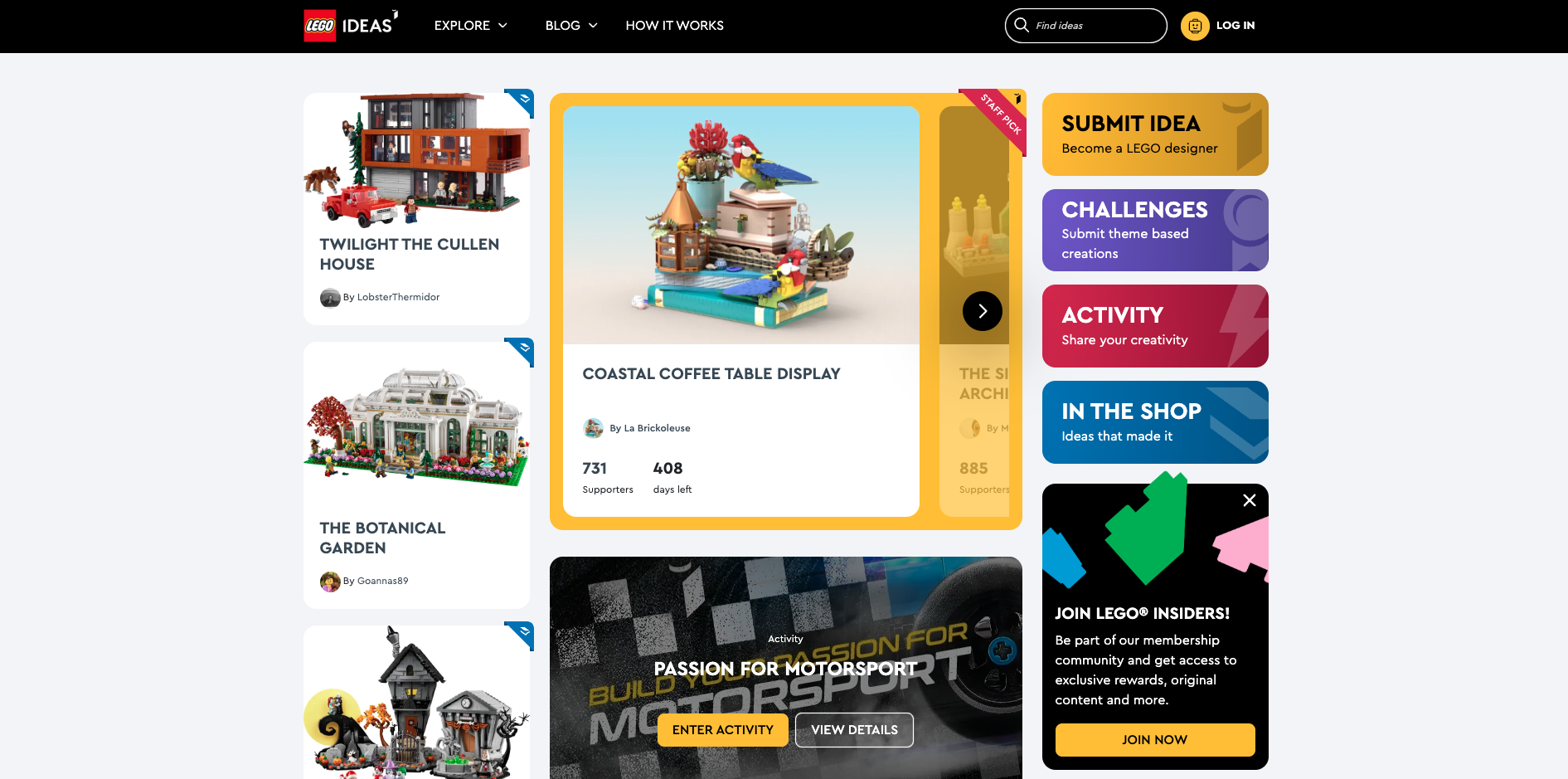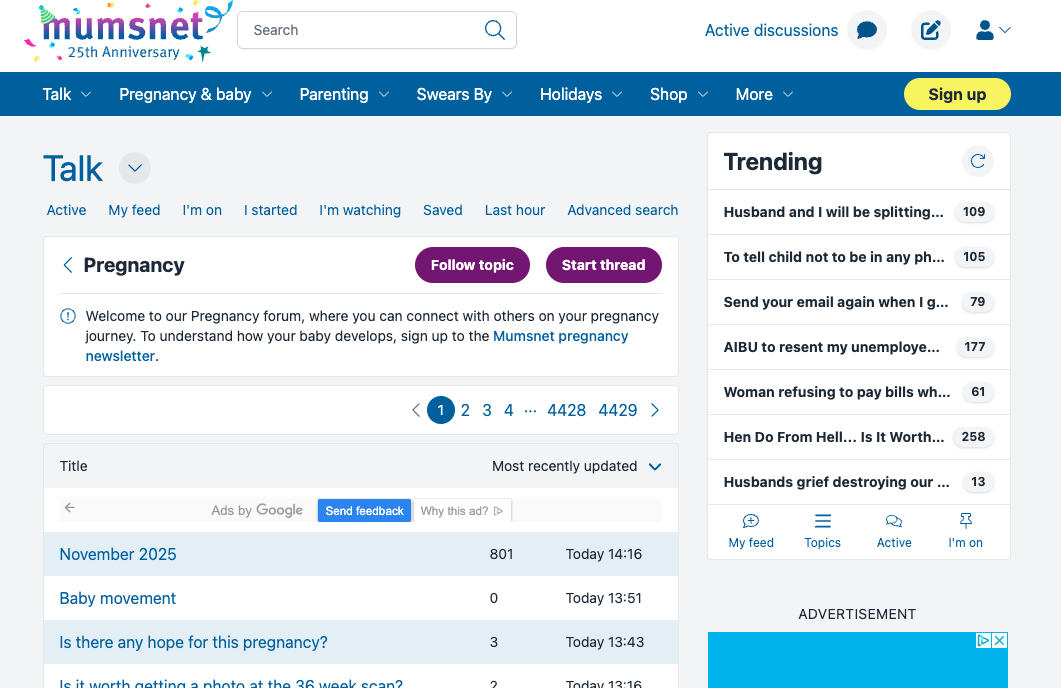
Jemicah Marasigan
Content Marketing Manager
The media landscape isn’t just changing—it’s already changed. Remember when big publishers could pump out content, rake in ad dollars, and call it a day? Yeah, that doesn’t cut it anymore. People are over clickbait, algorithm-chasing content, and media that feels like it’s just talking at them instead of with them.
Now, audiences want real connections, trust, and engagement. They’re looking for media that actually serves them—not just sells to them. They want spaces where they can interact, be heard, and feel like part of something bigger.
That’s why community-first media brands are winning. They focus on building relationships, creating value, and keeping people coming back—not because of an algorithm boost, but because their audience actually cares. If you want to build a brand that stands out (and sticks around), here’s how to do it.
The decline of traditional digital publishing
Unfortunately, the old-school media model is struggling. Once upon a time, publishers could rely on social media for organic reach, but now? Facebook and Google dominate digital ad revenue, leaving publishers scrambling for scraps.
According to a 2023 report by Reuters Institute, trust in news media is declining, with only 40% of people worldwide saying they trust most news most of the time. That’s not a great look.
Meanwhile, ad-blocker usage is skyrocketing. A 2023 study from Statista shows that 42.7% of internet users globally use ad blockers. If your revenue relies on traditional ads, that’s a major problem.
At the same time, social media algorithms keep changing, making it harder for media brands to reach their audience organically. According to Hootsuite, organic reach on Facebook has dropped to as low as 5.2% per post in 2023, making it nearly impossible for publishers to sustain traffic without paid promotions.
So what’s the solution? Community-first media brands. These brands aren’t just chasing clicks—they’re building direct relationships with their audiences and thriving because of it.
What is a community-first media brand?
A community-first media brand isn’t just about publishing content: it’s about creating a space where audiences feel seen, heard, and valued. Instead of pumping out generic articles for mass consumption, these brands focus on:
Direct engagement through forums, newsletters, and private communities
Personalized, niche content that speaks directly to their audience
Two-way communication that builds loyalty
Alternative revenue models like memberships, sponsorships, and premium content
Think of it as less broadcasting, more conversation. And the best part? These brands own their audience relationships instead of relying on third-party platforms like LinkedIn or Instagram.
Why community-first media brands are winning
They have built-in audience loyalty
Traditional media brands rely on search and social algorithms, which change all the time. Community-driven brands? They own their distribution channels through newsletters, private memberships, and direct connections. This means they don’t panic every time Google updates its search algorithm.
Take The Skimm, for example. What started as a daily email newsletter designed to make news more digestible for busy professionals has grown into a media powerhouse with millions of subscribers. By prioritizing direct audience relationships through email rather than relying solely on social media algorithms, they've cultivated a deeply engaged community that trusts their content and keeps coming back for more.
Niche audiences mean higher engagement
Trying to be everything to everyone just doesn’t work anymore. Community-first brands thrive by niching down and owning a space. When you serve a specific audience, engagement skyrockets.
For example:
The Athletic built a loyal sports journalism community and now has over 1 million paying subscribers.
Mumsnet is the go-to online community for parents, offering expert advice, peer support, and engaging discussions to its highly active audience of millions.
Exit Five has turned B2B marketing into a community-driven powerhouse, where marketers swap strategies, share wins (and fails), and get real-time advice from people who actually get it.
Entreprenista is where women entrepreneurs come to connect, learn, and grow—offering mentorship, business resources, and a network of like-minded founders ready to support each other every step of the way.
Indie Hackers built an entire community around entrepreneurship, where users actively participate, share insights, and support each other.
Monday Girl has redefined networking for women by creating a private membership community that offers exclusive career resources, mentorship opportunities, and curated events, making professional growth more accessible and engaging.
Letterboxd has turned movie discussions into a thriving social platform where film lovers share reviews, create watchlists, and engage in passionate debates, fostering a tight-knit and highly engaged community.
These brands don’t just push content—they build relationships that keep people coming back.
They use smarter monetization models
Outside of ad placements and ad revenue, community-first brands tap into multiple revenue streams, including:
Memberships and subscriptions with Patreon, Substack, or paid newsletters
Sponsored content and brand partnerships, that are highly targeted, high-value deals
Exclusive events and experiences like virtual meetups, workshops, and live Q&As
Premium content like research reports, gated communities, and niche newsletters
Trust and authenticity are their superpowers
Community-driven brands prioritize transparency and meaningful engagement. A great example is LEGO, which has built a massive, dedicated fanbase by actively involving its community in product ideas through platforms like LEGO Ideas. By listening to and co-creating with their audience, LEGO has fostered deep brand loyalty and a strong sense of ownership among its fans.

They build real connections that matter
Traditional media can feel like a one-way street—brands talk, audiences listen, and that’s about it. But community-driven brands flip the script, creating spaces where real relationships thrive. Whether it’s through active discussion groups, Reddit Ask Me Anything’s (AMAs), or exclusive subscriber events, they make sure their audience feels heard, valued, and part of something bigger.
You can even do this by exploring unique platforms to deepen audience engagement. SheerLuxe takes this to the next level by launching a WhatsApp channel, giving followers instant access to curated fashion, beauty, and lifestyle updates straight to their phones.
Take Discord communities built around brands like TechCrunch+—these aren’t just fan clubs, they’re real-time conversations where readers can chat directly with editors and industry insiders, ask burning questions, and stay ahead of the curve. It’s more than just content—it’s connection.
How media brands can embrace a community-first model
If you’re in digital publishing or media, or even just have a brand or business that could benefit from community, here’s how you can start:
Own your audience
If your audience lives on Facebook, Instagram, or TikTok, you're relying on platforms that can change their rules overnight. Instead, focus on building direct channels like email lists, newsletters, and branded platforms where you control engagement.
How to do it:
Get the latest from our blog every month
Encourage two-way conversations
People don’t just want to consume content—they want to be part of the conversation. Make it easy for them to engage with you and each other by creating interactive spaces.
“More and more brand partners are recognising communities as a crucial element of a holistic marketing strategy,” says Natalie Bleakley, Head of Client Strategy at Mumsnet.
With that in mind, I’d say the old marketing adage still applies: be where your customers are. But I'd probably build on that to advise, be where your customers are engaging and that looks different.”

How to do it:
Start a private Slack or Discord group where your most engaged readers can discuss content, ask questions, and share insights.
Host live Q&As on Instagram Live, YouTube Live, or LinkedIn Live.
Host webinars where client and customers can also directly ask you and your team their questions.
Feature user-generated content by spotlighting reader comments, fan-submitted stories, or expert opinions from your audience.
Prioritize quality over clicks
Clickbait might get quick attention, but it doesn’t build trust or long-term loyalty. High-value, deeply researched content will keep your audience coming back.
How to do it:
Create pillar content like in-depth reports, guides, or analysis that establish your brand as a go-to source.
Develop evergreen content that remains relevant over time, attracting continuous engagement.
Go beyond headlines by adding unique insights or expert commentary that sets your content apart.
Experiment with memberships and subscriptions
People will pay for exclusive, high-value content and community experiences if done right.
How to do it:
Test paid memberships on Patreon, Circle, or your own platform with perks like ad-free content, behind-the-scenes access, or premium discussions.
Offer tiered subscriptions (free, paid, VIP) to cater to different audience segments.
Launch premium newsletters with deeper analysis, insider insights, or exclusive interviews with industry experts
Make your audience feel like they belong
People don’t just follow brands—they join communities that reflect their identity. When your audience feels like they’re part of something bigger, they stick around and engage more.
“The best way to grow a community and increase engagement is to observe how members naturally interact and then find ways to enhance or simplify that experience,” adds Bleakley. “This approach guides both our platform updates and our advertising partnerships.”
She points to Mumsnet’s fashion community, where sub-groups on the platform were sharing daily outfits and tagging where they shopped.
“In response, our product team introduced a feature that automatically generates an image gallery on a thread when three or more images are uploaded,” Bleakley says. “[This made] it easier for users to browse outfits and navigate to posts featuring their favorite looks.”
How to do it:
Create niche community spaces, whether it’s a Facebook Group for lifestyle discussions or a Reddit community for industry professionals.
Recognize and feature community members through shoutouts, leaderboards, or reader spotlights.
Foster interaction within your content by adding Google Forms, Typeform, or embedded comment sections to encourage participation.
Strong communities are built with strong teams
A successful media brand isn’t just about content—it’s about the people behind it. From freelance writers and designers to brand sponsors and advertising partners, keeping track of every relationship is what keeps your brand moving forward. But when assignments, invoices, and sponsorship deals start stacking up, managing it all can quickly become overwhelming.
That’s where Copper CRM comes in. Copper helps media brands streamline their operations by organizing freelancers, tracking sponsorships, and keeping every conversation in one place.

Instead of juggling scattered emails and spreadsheets, you can focus on what really matters—building strong partnerships and delivering great content.
Keep track of every freelancer, from assignments to payments, so nothing falls through the cracks.
Manage sponsorships with clear visibility into agreements, deliverables, and follow-ups.
Stay on top of deadlines, contracts, and ongoing conversations without the mental load of remembering every detail.
When you have a system that keeps your freelance roster and sponsorships running smoothly, you free up time to focus on the bigger picture—growing your brand and strengthening your community.
Prioritize your brand’s community
Digital publishing is evolving, and community-first brands are leading the charge. Whether you’re an independent creator, a niche publication, a creative brand, or a major media house, engagement, trust, and direct relationships are the future.
If you’re serious about building a strong foundation, Copper CRM can help you stay organized by managing your freelancer roster, tracking sponsorships, and keeping every collaboration on track.
Ready to future-proof your media brand? Explore Copper today.










